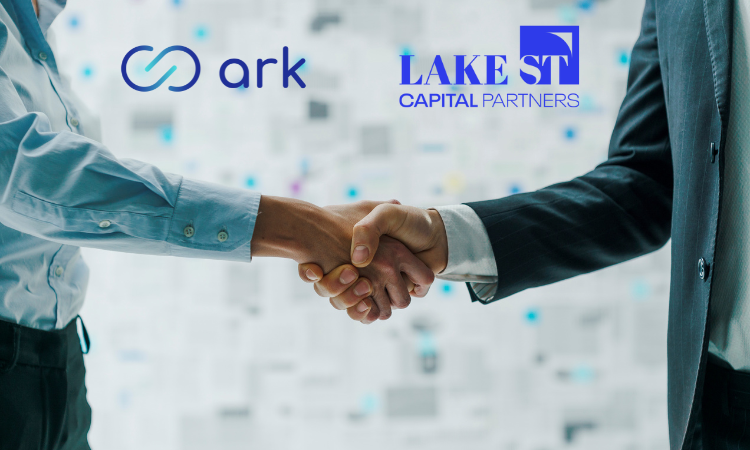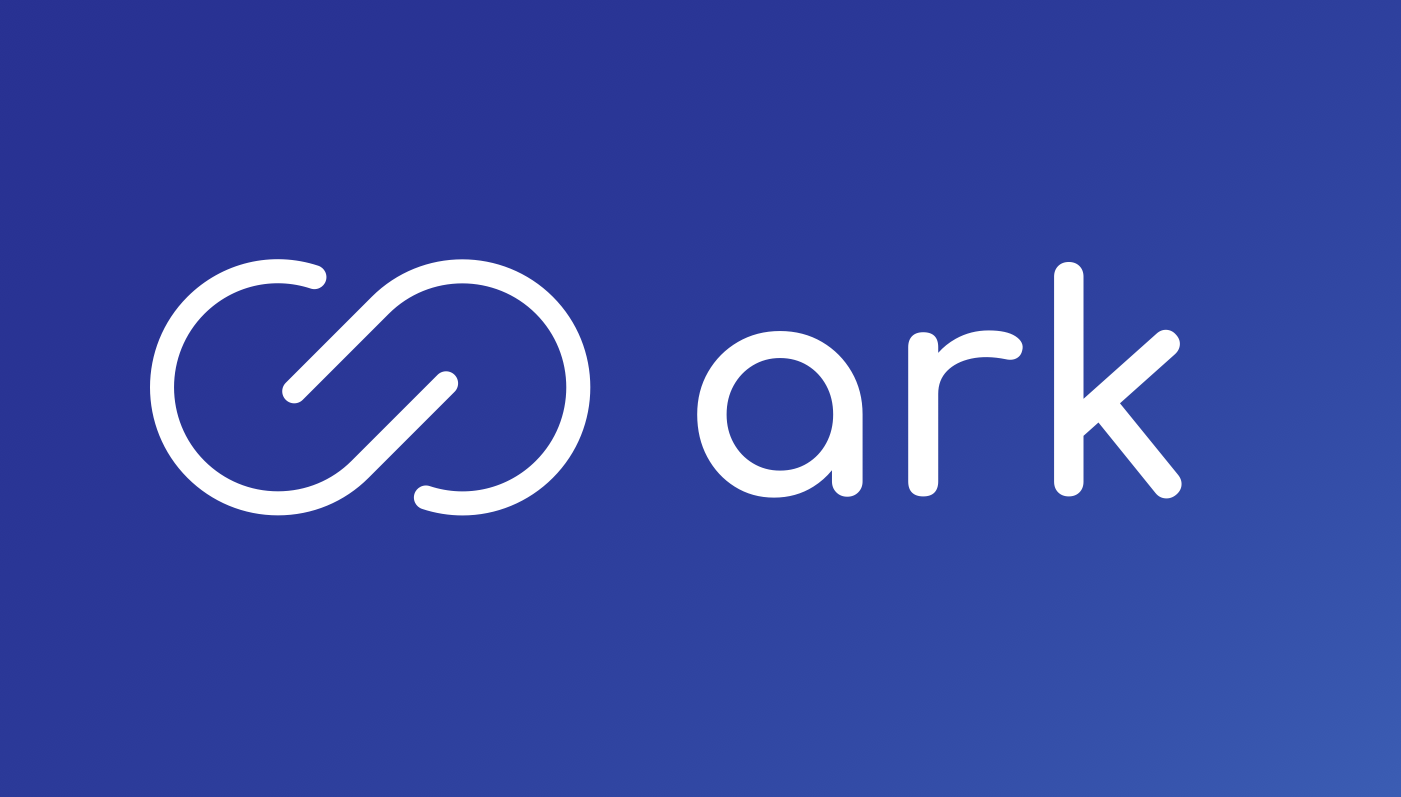Do you wish investor portals weren’t so frustrating and time-consuming? Does pulling a distribution schedule or K-1s test your patience?
Discover how Grayhawk Capital found a better way that was easier, and improved both efficiency, and increased transparency. Join Leib Bolel, of Grayhawk Capital, and Bryan Botha, of Ark, as they share a playbook that’s LP-friendly and streamlines transparency.
Chris Gale 00:09
Welcome to the Invest Experience Series. We have Leib Bolel, a partner at Grayhawk Capital, and Bryan Botha, chief revenue officer at Ark PES. Maybe we can just jump straight into it. Can you tell us about Grayhawk Capital? What is Grayhawk Capital’s approach to the market in investing?
Leib Bolel 00:34
Grayhawk Capital is a venture capital firm. We’re based out of Arizona. We’ve been around since 1999. We primarily have been investing in B2B SaaS companies with a focus on the capitalized market, so we’re spending a lot of time in reverse outside of the Bay Area or Boston and New York. We have all mobility companies in those geographies. But we like to spend time in markets like we’re in Arizona, Southern California, Utah, Seattle, up to along west of the Mississippi, although we’re spending more time in the Midwest lately. We tend to find those types of companies – I should say series A and series B as well we can lead or co-lead the majority of our investments on the series A side if we find these companies to be capital-efficient and price-sensitive. Looking back most recently to 2020 to early 2022, the multiple on valuations in those geographies were pretty strong, pretty staggering. And we kept to our discipline and thesis. We like these types of companies that are able to get up to $2 million for us to take a look at, so we’re investing in companies anywhere between $2 to 6 million or so in ARR. We are generalists as a whole, though we do have themes across healthcare IT, cybersecurity, and fintech along the productivity analytic side and, more recently, martech on the marketplace side as well.
Chris Gale 02:21
Silly question, but what is Grayhawk from?
Leib Bolel 02:25
Well, the name is Grayhawk. It’s interesting. We had a predecessor fund called Cornerstone. We are an SPIC fund. So the SPIC is a license given by the SBA that provides leverage to private capital. We went for the license. This is going back to 2000. There was another fund Cornerstone, and there couldn’t be two Cornerstones with an FDIC license. So we had to come up with another name. Grayhawk is a word from Central America, but has a presence in Arizona and Texas, as well. That was the name that was chosen for the fund. We renamed the fund.
Chris Gale 03:20
Awesome. Bryan?
Bryan Botha 03:39
Well, the ARK name is easy. We’re the most adaptable reliable and kickass software around so that’s that’s an easy one. It goes back to the original art vision. The vision or image of an arc worked for us. We liked the short name as well, and the fact that it conveys a sense of refuge, a stronghold, a safe haven. There are so many solutions out there. There’s so much data. The data just keeps on multiplying and getting to more and more and more. To be able to be as a sort of refuge, if you will, where investors can go, where they can get out of all the noise, they can get the relevant information, when they’re looking to use for the most important data to allocate their capital. That really resonated for us.
Chris Gale 04:42
Going back to the set of data that Brian, how do you agree on what your product is?
05:36
I think there’s a basic expectation that primary communication reporting is going to be given. I think that’s a given. When it comes to us relaying information, I think we need to go historically over what’s been done in the industry in the past. I think PDS were generally related to LPs. They had to be mailed before technology came in. There is an expectation that, when people want to see what their value is, when capital calls are expected, etcetera, they have information. So there’s definitely been an evolution within the industry as a whole to bring on technology. I mean, frankly, we’re investing in technology. We’re investing in obtaining information with ease. If we’re investing in affirming that, then there’s no reason why we shouldn’t be doing that internally as well. So I think the main product and investment thesis is going to be this philosophy around investing. It’s about keeping the mandates and the focus on those types of investments. But I think a prerequisite before that is going to be having access to that type of information readily available for our LPs. The premise is that the product itself is going to be the fund managers and the philosophy and investment thesis. Your prerequisite is having that information readily available.
Chris Gale 07:19
If you want to do that efficiently, what about outsourcing? Is outsourcing the way to go? How do you think about outsourcing?
Leib Bolel 07:26
We ran a pretty in-depth analysis and review of the best forms of communication with LPs. What we found was that there are, on the high net worth side, those whom I would call old school, LPs that want to receive a package in the mail and be able to open it up and then we put their CPAs in when it comes to filing review line item by line item. Our most recent funds – we had a really strong array up from our last one – tend to be maybe a little bit high on the demographic side, but we brought in a whole new cohort of younger LPs. I think the expectations there are they are seasoned investors. They’re working with many different types of funds. There’s an expectation that anything outside of being able to plug in types of information at the click of a button is a requirement.
When we were looking at outsourcing, we were doing everything internally up until about 2020. Everything was in the house. The FDIC mandate protocols reporting in and of itself, and we need to be able to find a fund admin that had knowledge around SPICs. So we must have looked at probably 15 to 20 different portals. We ended up going with a different type of fund administrator. The challenge there, again, was that it was a challenge from the technology side. It was very much a hybrid. They have a lot of manual data entry. When we were submitting information, they would come back to us for approval. We wanted to find a solution where we were going be focused on doing our job in terms of investing, betting, deal flow, and everything else. Obviously, the reporting is critical to any fund manager. But if that’s an expertise that someone can take dozens of hours and see it through, then we can focus on the field type that was optimal. So if we did go with a different service provider, it would become quite redundant in terms of the type of work that we were doing specifically because we were in SBHC and also some of the processes and protocols. We were looking for something that was just seamless, that we could upload, have everything automated, and move from that. Subsequent to that, we made a decision to find another alternative. We went back to the drawing board and came across ARK, which was a self-service platform, which worked really well for us. We’ve been really happy
Chris Gale 10:39
When you say hybrid – not to pick on anyone – that’s a fund administrator with a portal. It sounds like you have to follow up on the manual work that was being done on the portal site. Correct?
Leib Bolel 10:55
There was a lot of manual entry, a lot of back and forth to clarify this, clarify that, the large majority, if not all, of the time. We’ve enhanced that, as someone who is experienced in this process. If we’re uploading things, it’s because we’re telling you it’s okay. We don’t need you to come back to us and say, “Can you review this, and is it okay to go ahead and publish?” That’s a difficult redundancy. That model didn’t work. There were a number of different options of where they – groups, other companies – had models. But there was a lot of interfacing time that we just didn’t feel was warranted. Just a software platform to automate whether it’s a distribution of K-1, capital pools, or other aspects. That was really ideally what we were looking for.
Chris Gale 12:00
If you’re going for LP transparency, we’ll call that the investor experience. I would say you are outlining it there. Can you tell me more? Tell us more about the experience you had. What were the questions you were asking? What were you looking for when you were trying to figure out how to have something that would be more self-service? It would get rid of these tendencies? Were there specific things we’re looking for, or do you advise others who might be on the call?
Leib Bolel 12:33
Well, Chris, it was a simple request. Where can we find a platform where we can upload and keep all the documentation in one place where our LPs have the ability to come in? Whether it’s going to be DPI or those other metrics, they want to know when their tangible goals are expected and their statements. We just needed one place where we could upload things. That’s technology’s job, and the LPs are able to get the information that they’re requesting.
Leib Bolel 13:16
I know that there are a number of different options for customization. I think I mentioned before we jump live over here that we’re big fans of K.I.S.S. – keep it simple, stupid – and the basic VC reporting metrics that are out there. So I can’t say there was a tremendous amount of personalization. We did put up the metrics that we built. It’s going to give our LPs a full 360-degree view of their investments. But we didn’t spend a tremendous amount of time on the customization side.
Chris Gale 13:55
We’ve got a question, which I’m not going to get to quite yet. But for anybody who hasn’t noticed there is a Q&A section, we do look forward to coming back to those questions.
Brian Botha 14:10
We at Ark have both GPs like Grayhawk and other funds that are using us directly. We also have fund administrators who are using us because they have lots of funds they want to be able to offer a portal to. Customer customization is kind of a funny word in my mind because I’ve been in the software technology space for so long. That’s kind of a dirty word. We like to think of it like customization was the thing you had to do by reaching out to your technology vendor and saying, “I want to do something other than the standard guardrails that you allow.” And then they would come back to you and say “That’s going to be an arm and a leg and maybe we can do three-quarters of it, but not the whole thing.”
We think that it’s really important to have configuration and customize – I should say flexibility, right? – because it’s super important for our fund administrator customers, maybe not a love lesson for the GPs, because no two funds are exactly alike. Everybody’s got their unique way of reporting DPI. There are lots of different ways to report your key performance measures to your LPs. One customer is going to want something very different from the next, not just for the dashboard, but for the way that reports look, whether they want to have two-factor authentication when folks log in, and obviously there are logos and branding and all that kind of stuff –it’s a given. Going beyond that, let’s say you weren’t an LP to the fund. You want to be able to have your tax preparer or a consultant or an advisor login, but you don’t necessarily want that person to have full access to see everything. That kind of configurability is key. So it’s really important to have the ability in this industry to not have just one cookie-cutter version of the way things go.
Chris Gale 16:02
So, Bryan, if I stick with that for a second, because I’m hearing “keep it simple,” and that almost sounds like they should have a generic, very practical, easy-to-work-with solution. But I think you’re saying, to have that, there has to be complexity on the back end that’s not necessarily getting the wailings.
Bryan Botha 16:22
There seems to be a paradox. You don’t have to have complexity, necessarily, because you can make the UI super intuitive, obviously. With a fund administrator with many different clients to support, they’ve got a little bit more things to think about than one would find in terms of having a solution and technology to handle all of those requirements. But we would like to think we’ve done it in a way that, for example, just giving OnRamps training, live with our software for the very first client, like a fund, takes no longer than these things used to take. Some solutions still take months. They still take days and hours for us. We have these new table stakes. I kind of like to think in space. Software solutions, more than five or 10 years ago, weren’t all in the cloud. Now it’s a given everybody’s going to be in AWS or Microsoft Azure. That’s been true for the last five years, but the new table stakes are things like making sure the software you’re about to procure includes implementations, it’s very flexible, it’s got integration to what’s working for you today. And you can try it before you write a contract. Just the ability to be able to use the software and really know if this is going to meet your needs and prove it out before you make the decision to go ahead and contract is key. We’ve gotten that down to a four-hour trial time. You’re through the trial, you’re through the pilot, you’ve loaded. You’re basically on your way to finishing up and three-quarters of the way to going live. That’s really key. It’s one of the new table stakes that I think are emerging in the space, or what GPs expect from technology.
Chris Gale 18:26
So I’m going to divert from the script a little bit and maybe throw this to Bryan first and invite Leib to jump in. Is it better for the GP where the fund administrator has investor experience in the portal? I’m asking the question first on the Ark side because I know that co-sourcing is a thing that you’ve written about. Is it better for the GP to have control over the fund administration?
Bryan Botha 19:14
This touches on the earlier point that they talked about, which is, a lot of funds actually don’t even know necessarily that when they’re going with service providers and outsourcing their fund administration, they shouldn’t just go with the portal technology that’s available from that administrator. What’s great about Ark, and this isn’t true for every solution out there, it works really well with co-sourcing. There are more and more in the market today. There are situations where the firm will take a fund in-house after having outsourced or they’ll start a family office internally and they want to do that themselves in conjunction with the funds that are outsourced. They might be doing SPVs alongside the main fund, and they don’t need to have those outsourced. There’s this combination or hybrid approach. When you as the GP or fund manager are using the technology and deciding on the technology, you’ve got all your data in there, your investor information, your fund information. If you were to change down the road and move from one fund administrator to another, all that data is locked up typically with your fund administrator.
There are some administrators out there who are embracing crowdsourcing and anybody who’s using our solution. For example, you can just take that solution after you make that decision. That is a nice way to go. That’s not so for a lot of the fundamental players in the space today. They tend to be in a situation where technology can’t be easily ported over to the GP to take over after the GP moves to a different situation. So I think co-sourcing is a key point to make fund managers aware of and something to really consider by having the technology that’s theirs. All the data that’s there is available for them isn’t in their control. They can invite one or two or however many fund administrators into that technology to be able to do whatever they need to embrace outsourcing. But at the same time, it doesn’t limit their ability to be in the driver’s seat, keep control of their data, and ultimately control the investor experience so that investors are still getting their information on all the funds that are involved in one place.
Chris Gale 21:34
Going down the co-sourcing route, I guess the basic question is one of the reasons we were excited about having this webcast. Earlier Greg Hawkes was focused on having control. From your perspective, do you have an answer to this question? Should the GP and the fund administrator have investor experience in the portal or is that maybe asking the wrong question?
Leib Bolel 21:59
No. I could tell you it was a nightmare, going from our prior service provider, being able to explain and download all the information that’s needed, and needing to re-upload. We’re not looking anywhere else. We’re happy with Ark PES. They don’t recall if we’ve discussed this ability to have control over the data. But I know the answer was that it was a long and tedious task of being able to go from one task to another. I think, ultimately, the source of data should be kept out, right? We’re engaged with a service provider. It’s our data. I think common sense tells us that whom that data belongs to should have access to it. We feel that we have a stronghold on the data capabilities and where the data is coming from. It’s coming from us and in the Philippines.
Chris Gale 23:29
We have a hard stop at the top of the hour. Someone has been waiting very patiently to ask this question from the beginning so I made sure to give it some time. This question is with respect to deal flow. How do you keep a straight line to your commitment to reaching undercapitalized businesses as companies in bigger markets in Boston, NYC, San Francisco, etc. become more prominent? Are there any investment restrictions in place?
Leib Bolel 23:59
Regarding SPIC, we are mandated to invest in the United States only. So US-domiciled companies if it’s an international company that has a subsidiary in the US, that’s not going to be an investment. We need to be investing in the parent company. There are other restrictions like the use of proceeds, use of capital needs to go to U.S. operations, etc. Headcount needs to be at least heading towards 50 percent in the US. As it relates to the unexamined markets, it’s worth spending a lot of time in the outdoors, more compact. There’s more of a competitive nature in the larger metropolises like Boston and San Francisco. We’ve been around for 24 years right now. We’ve got consistent co-investors where we see a lot of strong deal flow from new emerging fund managers coming up. I’ll give a shout-out to the RBC Direct Investment Venture Capital Association and close to 100 pre-qualified VC fund managers that are out there. So we have a couple of stable events where you get to meet them, break bread with them. As partners, we spend time in different regions and continue to cultivate and cherish each other’s network where we see strong pipelines.
Chris Gale 25:24
Again, I’m watching the clock. I think I’m going to ask one last question. Let’s skip to the last question in the outline. Can you talk more about Grayhawk as a customer and Grayhawk as an investor in B2B technology and how your approach as a customer works together with how you look for investments? You are a customer of investor portal software. Now you’re looking for enterprise technology solutions. You also invest in enterprise technology solutions. I’m just wondering if there’s a cross-pollination in that experience.
Leib Bolel 26:13
The cross-pollination goes down to due diligence. How we access different vendors really comes down to what we’re working on every day – due diligence. How do we make the best decisions for ROI? That goes for the investment side and it comes down to assessing the customer as well as we’re going to be paying X amount – what is the ROI on that? Is it solving a “must”? We were looking for companies that have a must-have – that is a significant pain point. It’s not nice to have a product, it’s a must to have a product price. This for us was a must-have. It checks the box in terms of what we look for investments and what they can provide. Obviously, going through line by line on the dolphins list, we didn’t spend three months’ intelligence with ours. But we spent a significant amount of time where we had a strong level of confidence that it was going to be able to meet our needs. Yes, I think there are definitely some overlaps in terms of how we look at investments. Again, I think it comes down to a pain point. It’s a must to have been, what’s the ROI on it, and does it solve the problem?
Chris Gale 27:31
That was an excellent contribution to the webcast. Thank you, everybody. We’ll get a recording together and share it with participants.
Leib Bolel and Bryan Botha 27:38 Thank you.




